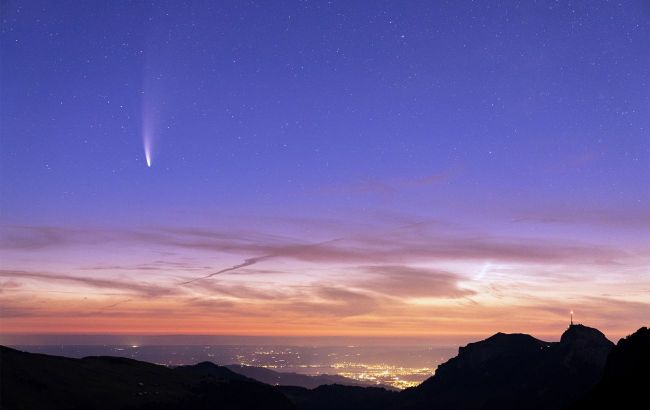Bright comet to be visible without telescope for 1st time in 80,000 years
 Residents of Ukraine will be able to see a unique comet (photo: Getty Images)
Residents of Ukraine will be able to see a unique comet (photo: Getty Images)
At the end of September, the world's inhabitants will have a unique opportunity to see the amazing comet C/2023 A3. The spectacle will be available for several days and experts say that it will be possible to see this comet with the naked eye, according to Live Science.
Bright comet could be visible without telescope for the 1st time in 80,000 years
Astronomers hope that comet C/2023 A3 (Tsuchinshan-ATLAS) will be visible to the naked eye in the morning, an hour before sunrise. Subsequently, this comet will be visible in the evening sky only in mid-October.
The comet will peak in brightness on Friday, September 27, when it reaches perihelion, the closest point to the Sun in its estimated 80,000-year orbit.
Residents of the Northern Hemisphere will be able to see the comet a few degrees above the east-southeast horizon about 30 minutes before sunrise between Friday, September 27, and Wednesday, October 2.
The best mornings for observing are Sunday, September 29, and Monday, September 30. At this time, the comet C/2023 A3 will be joined by a gentle waning crescent.
Those who live closer to the equator will be able to enjoy viewing the comet until October 2. After that, the comet will be lost in the sunlight.
On October 12, it will reappear, but for residents of the Northern Hemisphere and in the night sky, when it will be at its closest point to Earth. It is at this time that residents of Ukraine will be able to see it. Then it will move closer to the western horizon.
Although naked-eye observation is predicted, comets can be unpredictable and fickle, so it is worth stocking up on good stargazing binoculars or a small telescope.
When you observe the comet, you will be able to see a significant dust tail - as a result of the dust and ice that make up the comet melting slightly as it approaches the Sun.
Astronomers predict that this comet will be very bright. It was discovered at China's Zijinshan Observatory more than a year ago and is now predicted to be the brightest in 20 years.
It moves in a weakly hyperbolic orbit, which means that it is likely to pass through the solar system only once.
Earlier we wrote about the second moon rising over the Earth for several weeks.
Read also whether the asteroid God of Chaos could become dangerous for the Earth.

